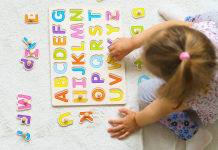This remote learning is for the birds. My child is doing so much zooming this year, I fear that we are in Zoom Doom. He’s pushing back and it’s so hard to watch, he wants to get off the computer before he even sees his teacher. As an occupational therapist, I know that my 7-year-old just needs to move his body. He needs to run and jump and play with his friends, and this sitting-all-day-at-a-desk and being-on-technology is so counter-intuitive to basic child development. (For more on this, read about remote learning from a pediatrician’s perspective). But right now we have no choice, if we are going to get through this COVID pandemic, it’s our only option.
I have something to offer ….
As an OT, I am trained in sensory integration theory and practice. As a school based practitioner, I work with educational teams to develop sensory diets for children on my caseload. What’s a sensory diet? It’s not a nutritional weight loss plan, as it may sound! It’s a schedule of activities to target the sensory needs of an individual, so that they can stay regulated and participate in school.
Let me explain….
As adults, we naturally take our own sensory breaks during the day – a walk at lunch, a mid-morning coffee break, a cold drink in the afternoon or a hard candy or gum to keep us alert in a meeting. We know that we need a hot shower in the morning to get going, or plan a workout when needed to maximize our day. I make sure I have a pack of gum or sour gummies to get through a long drive. Humans weren’t made for this much sitting. Our eyes weren’t designed to tolerate so much blue light. Sedentary activities are hard for lots of people, but especially for children. That’s why we have these programs on our watches to encourage us to stand, or ergonomic messages on our computer to take a stretch break.
Kids often don’t know what they need – or it comes out in less than appropriate ways. My own child kicks the legs of his desk, and rocks or swivels in his chair. He taps his pencil and clears his throat and fidgets with every little thing on his desk. And now that I’m around him 24/7 to facilitate his learning, its driving me crazy to watch!
It’s important to have a plan. Just as adults have a meal plan or a workout schedule. Kids learning at home can benefit from a sensory plan.
Here are some sensory strategies to try if your child is struggling to pay attention in their remote learning. Think of it as building a “tool box” for their regulation and attention.
- Tactile Input. – Find fidget toys, squeeze balls or small manipulative that you can hold in your hand. Spots like G Willikers in Portsmouth and Noggin Factory in Dover have so many options! For some students, putty can be a good finger-break (make sure it stays on the table and not in their lap, it will stick to clothing!). Anything to keep their hands busy, from clicking around on the screen.


- Movement. – my children run laps around the yard in between Zoom sessions, and we take longer walks midday. It may be helpful to have other opportunities for movement while they’re learning. A spinning office chair, a move-n-sit cushion or a ball chair might offer a chance to wiggle in their seat while on Zoom.


- Deep Pressure. – some kids benefit from deep pressure input to help with attention and regulation. This can range from a a big bear hug from mom, changing their seating to something more enveloping – like a bean bag chair. Even applying lotion to your hands works! As OTs, we often recommend weighted lap pads for students at their desks, to encourage feeling more grounded. When you are taking an outdoor break, consider the activities that give the joints the most input. Think of bike riding, monkey bars, and climbing. We call these heavy work activities. They are incredibly organizing for kids bodies.

- Auditory. – This sensory system is so taxed right now as kids are using their ears to learn from the little audio speaker on their device. For most younger students, they need a parent nearby to help manage the technology. This means, they’re often in the thick of your household. Noise – cancelling headphones can help reduce environmental noise and help them tune in to their learning.

- Oral input. This one is my favorite and probably the easiest change for our kiddos while they’re seated (hopefully it doesn’t drive their teachers bonkers). The movement of the jaw is incredibly organizing. So capitalize on the snacks! If they’re responsible enough for gum – this is the time to try it. Also consider:
- Crunchy snacks: carrot sticks, celery, apples, pretzel rods, peppers, veggie chips, popcorn, granola, nuts/seeds, ice chips, etc
- Chewy snacks: beef jerky, dried fruit, fruit leather, bagels, raisins
- Extreme tastes: wasabi peas, sour gummies, war heads, tart lemonade
- Straws: keep cold water at their desk in a water bottle. I like the kinds with the flexible straws that they can chew on. Try sipping applesauce or yogurt drink through a thick straw, or using a coffee stirrer for thin liquids – to get the maximum about of work to the oral muscles.
At our house, the general rule is Green Time Before Screen Time. I try my best to keep the television off during the week, and encourage outdoor and creative, free play as much as I can. Play can help them process what’s happening to them (and our world) right now; its so incredibly important.
It is not atypical for children to show some sensory differences as they navigate childhood. Given the times of the pandemic and the great disruption to their lives, these symptoms might seem more pronounced than typical. If you are concerned about your child’s sensory processing difficulties, please speak to their pediatrician.










